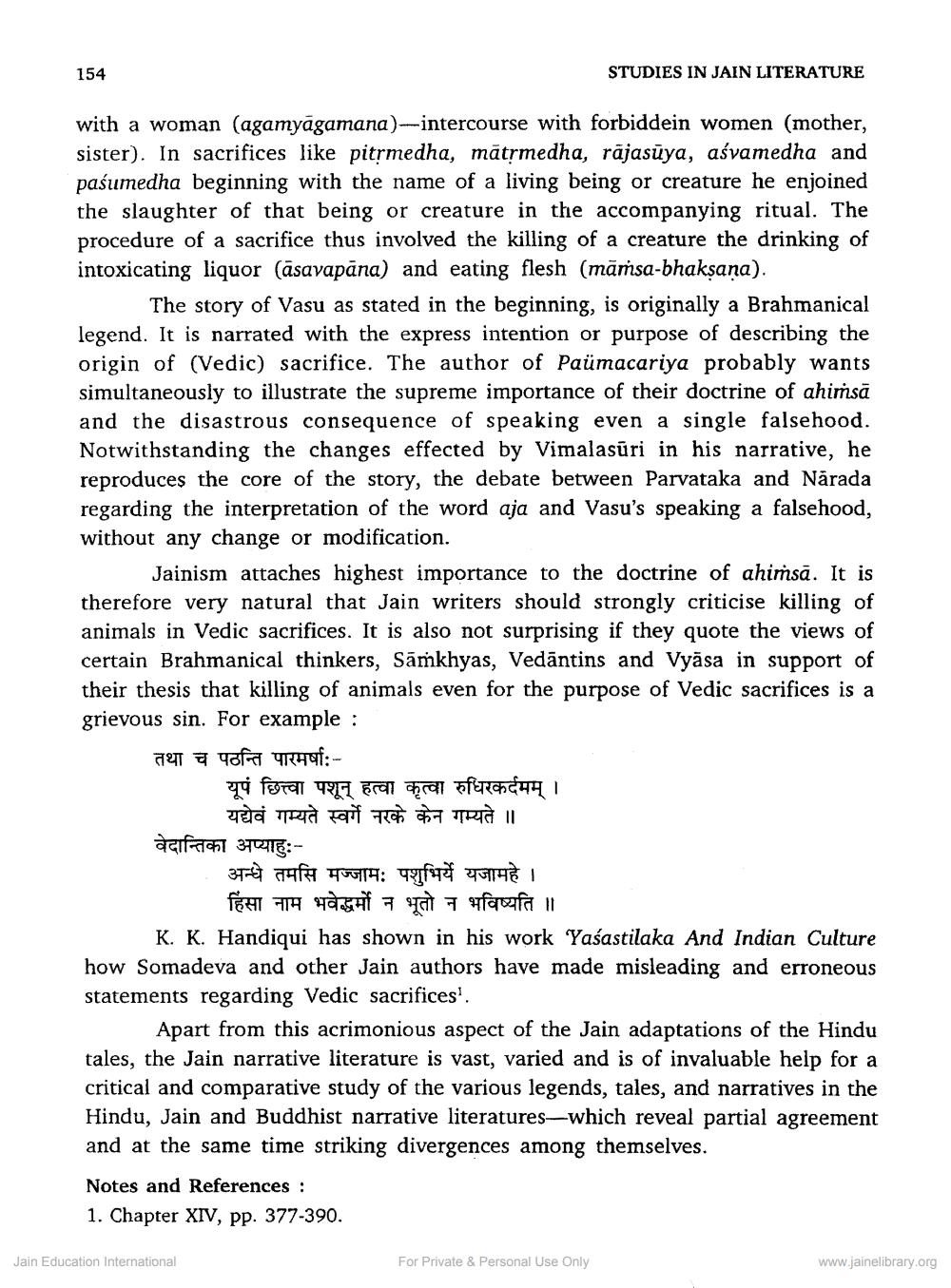________________ 154 STUDIES IN JAIN LITERATURE with a woman (agamyagamana)-intercourse with forbiddein women (mother, sister). In sacrifices like pitrmedha, matrmedha, rajasuya, asvamedha and pasumedha beginning with the name of a living being or creature he enjoined the slaughter of that being or creature in the accompanying ritual. The procedure of a sacrifice thus involved the killing of a creature the drinking of intoxicating liquor (asavapana) and eating flesh (mamsa-bhaksana). The story of Vasu as stated in the beginning, is originally a Brahmanical legend. It is narrated with the express intention or purpose of describing the origin of (Vedic) sacrifice. The author of Paumacariya probably wants simultaneously to illustrate the supreme importance of their doctrine of ahimsa and the disastrous consequence of speaking even a single falsehood. Notwithstanding the changes effected by Vimalasuri in his narrative, he reproduces the core of the story, the debate between Parvataka and Narada regarding the interpretation of the word aja and Vasu's speaking a falsehood, without any change or modification. Jainism attaches highest importance to the doctrine of ahimsa. It is therefore very natural that Jain writers should strongly criticise killing of animals in Vedic sacrifices. It is also not surprising if they quote the views of certain Brahmanical thinkers, Samkhyas, Vedantins and Vyasa in support of their thesis that killing of animals even for the purpose of Vedic sacrifices is a grievous sin. For example : तथा च पठन्ति पारमर्षाः यूपं छित्त्वा पशून् हत्वा कृत्वा रुधिरकर्दमम् / यद्येवं गम्यते स्वर्गे नरके केन गम्यते // वेदान्तिका अप्याहु: . अन्धे तमसि मज्जामः पशुभिर्ये यजामहे / हिंसा नाम भवेद्धर्मो न भूतो न भविष्यति / K. K. Handiqui has shown in his work 'Yasastilaka And Indian Culture how Somadeva and other Jain authors have made misleading and erroneous statements regarding Vedic sacrifices!. Apart from this acrimonious aspect of the Jain adaptations of the Hindu tales, the Jain narrative literature is vast, varied and is of invaluable help for a critical and comparative study of the various legends, tales, and narratives in the Hindu, Jain and Buddhist narrative literatures--which reveal partial agreement and at the same time striking divergences among themselves. Notes and References : 1. Chapter XIV, pp. 377-390. Jain Education International For Private & Personal Use Only www.jainelibrary.org




